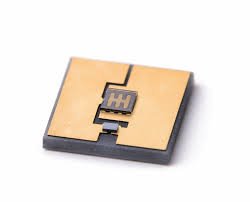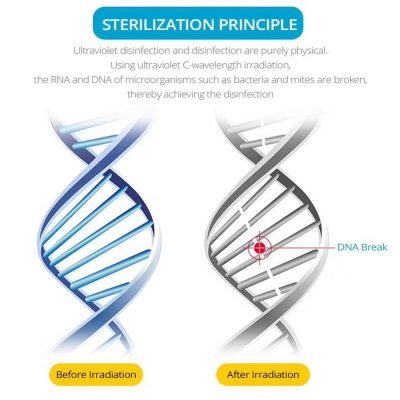No products in the cart.
UV-C Tech
LED light to decontaminate coronavirus surfaces
US researchers have designed and developed an ultraviolet LED light that has the ability to decontaminate surfaces and, potentially, air and water that may have been in contact with the SARS-CoV 2 virus, which causes COVID-19
Researchers at the Center for Solid State Electronics and Power, University of California, Santa Barbara , have developed an ultraviolet LED light that decontaminates surfaces and potentially air and that have supposedly been in contact with the coronavirus.
In the midst of the current pandemic, various groups of scientists, in addition to working on obtaining prophylactic or therapeutic vaccines and effective drugs against the coronavirus, are also investigating in other areas, such as disinfection.
The LED light (Light Emitting Diode) is a solid semiconductor of great resistance that, when receiving a very low electrical current, emits light efficiently and with high performance.

It is proven, according to experts in this field, that the useful life of an LED lamp is up to 30 times greater than an incandescent one; more than 20 times that of a halogen and also about 30 times more than a fluorescent tube.
Materials expert Christian Zollner, author of this breakthrough just released by ACS Photonics,explains that they have proven the efficacy of deep UV LED light in sanitation and purification.
In fact – he recalls –lately much attention has been paid to the power of ultraviolet light to inactivate the new coronavirus. As a technology, UV light disinfection has been known for a long time.
Large-scale LED against coronavirus
The authors highlight that its efficacy on a large scale against the spread of SARS-CoV-2 has yet to be demonstrated.
PorOn the other hand, it should be noted that not all ultraviolet (UV) wavelengths are the same. UV-A and UV-B rays, the types we receive here on Earth from the Sun, have important uses, but UV-C is the ultraviolet light of choice for purifying air and water and for inactivating microbes.
Zollner warns that “UV-C light in the 260-285 nm range most relevant to current disinfection technologies is also harmful to human skin, so for now it is mainly used in applications where there is no person present in the moment of disinfection”.




It should be remembered that the World Health Organization (WHO) warns against the use of ultraviolet lamps to disinfect the hands or other areas of the skin; evena brief exposure to UV-C light can cause burns and eye injury.
This researcher points out that this area of the electromagnetic spectrum is a relatively new frontier for solid-state lighting. UV-C light is most commonly generated by mercury vapor lamps. “Many technological advances are needed, he acknowledges, for UV-LED to reach its potential in terms of efficiency, cost, reliability and useful life.”




Deep UV LED
This study describes a more elegant method of fabricating high-quality deep ultraviolet (UV-C) LEDs, which involves depositing an alloy film of the semiconductor aluminum gallium nitride (AlGaN) on a silicon carbide substrate. (SiC), instead of sapphire.
SeAccording to Zollner, using silicon carbide as a substrate enables more efficient and profitable growth of sapphire as a UV-C semiconductor material.
Silicon carbide is not a perfect combination, Zollner emphasizes, but it allows high quality without the need for expensive and additional methods. Furthermore, it is much less expensive than the ideal aluminum, nitride substrate, making it more attractive for production.
Portable, fast-acting water disinfection was one of the main applications that researchers had in mind when developing their UV-C LED technology.
Source: https://biotechmagazineandnews.com/luz-led-para-descontaminar-superficies-de-coronavirus/

 Español
Español
